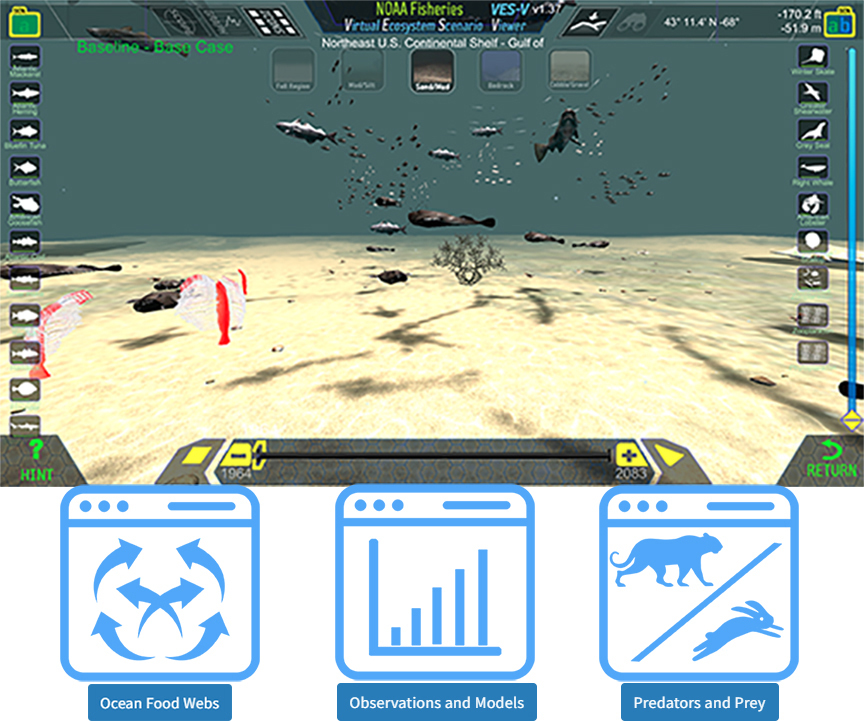Model marine ecosystems with virtual reality in your classroom
NOAA Ocean Service Education and NOAA Fisheries are excited to announce Modeling Marine Ecosystems with Virtual Reality, a new series of educational modules that help high school students explore how scientific models work.
Three themed modules - Ocean Food Webs, Observations and Models, and Predators and Prey - contain 21 interactive investigations that are aligned to the Next Generation Science Standards (NGSS). In these investigations, students use scientific data and models – the same ones NOAA scientists use – to explore human-caused changes in ocean ecosystems and the impacts these changes have on the animals in those ecosystems. The modules also include resources for educators, including student worksheets, NGSS alignment, and presentation graphics.
Models, or data-rich representations of systems, help scientists better understand and predict changes in environmental processes in the ocean, the weather, and the climate. The new modules feature the Virtual Ecosystem Viewer, an interactive virtual reality model developed by NOAA Fisheries that NOAA and other scientists use to visualize changing ocean ecosystems, especially fish populations.

Ocean Food Webs
Students use the concepts of food webs and trophic levels to explore populations of marine organisms. They individually research an organism in a marine habitat, combine their data in a jigsaw activity to produce a food web diagram for that habitat. Students then collect biomass data during “virtual dives” which they use to determine the relationship between biomass and trophic levels.
Observations and Models
Students are introduced to data derived from observations and data produced by models. They learn about differences and similarities between these two data sources, how to recognize each, and how each type of data is used by scientists to make predictions. Students also explore the methods biologists, ecologists and other scientists use to estimate the sizes and compositions of populations of organisms by observing limited samples from those populations. Students then conduct “virtual dives” to observe simulated marine habitats generated by models and observational data, and use these ideas to estimate future populations of tuna and of lobster.
Predators and Prey
This module introduces students to models used to predict populations of organisms in an ecosystem. Students first analyze a simple predator-prey system, optionally building and “running” a simple, spreadsheet-based model. They compare the population graphs produced by the model with historical data from a similar, simple predator-prey system. Students then collect data on “virtual dives” in simulated marine habitats. They gather biomass data for predators and their prey in complex marine food webs and compare changes over time to the dynamics in simpler systems with a single predator and its lone prey.
|